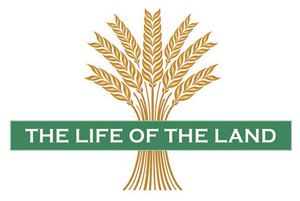News from the Noteworthy from Sustainable Otsego

Although the traditional road to survival for the dairy industry has been to increase production, some of the remaining small dairies in New York State are now focusing on quality rather than quantity. Consumers now can choose milk from grass fed or A2 herds, as well as from farms which are certified regenerative or organic. The new products are based on developments in the world of nutritional science, particularly in the field of milk fats and proteins.
Fifty years ago, the world of fats was simply divided into saturated (bad for you) and unsaturated (not bad). Now this complicated field has been broken down into a broad spectrum of hundreds of fatty acids, the most important for human health being the omega-6 and omega-3 fatty acids. Although both are considered essential, the ratio of omega-6 to omega-3 is much too high in the average western diet. Milk derived from grass-fed cows corrects this ratio, with higher levels of omega-3 fatty acids, which are known to be anti-inflammatory.
A great example of the virtues of quality over quantity is the milk produced at Miller’s Organic Dairy in Richfield Springs. A long standing certified organic farmer, Miller’s introduced grain as a means to increase volume of milk production in the 1970s. They soon recognized this practice led to more milk, but poor health in the herd, and lots of expenses. Although generations of cows have now been bred to better tolerate grain, the Miller’s decision to switch back to a pure grass diet provided them with a herd of cows well positioned to provide a better quality product, called “grass milk,” marketed by the Organic Valley Cooperative.
Similar breakthroughs in the field of milk proteins have led to a product called A2 milk.
The major protein in milk is casein. Initially, all cows produced casein A2. Around the time that cows were domesticated, about 5,000 years ago, natural mutations occurred resulting in other casein types, such as A1, particularly in Holstein cows. Holsteins are the most productive of all dairy cows. So the A1 mutation became universal in the most popular dairy cow.
The interesting thing about casein 1 is that some people don’t digest it well, and the symptoms exactly mimic lactose intolerance (gas, cramps, diarrhea). It seems that casein 1 intolerance is actually more common than lactose intolerance.
Certain breeds of cows never lost their A2 casein genetics, mostly Guernsey, Jersey, Normande and Brown Swiss. We recently visited Family Farmstead in Worcester, a certified regenerative and organic farm where Caroline and Matt McGrath have established a purely A2 herd. They also have built a processing plant for the other farms in the area which are developing A2 herds.
Grass fed and A2 dairy cows produce smaller volumes of milk. The disciplines of organic and regenerative practices are not cheap. This is why these products cost a bit more than conventional milk. For folks who prioritize nutrition for developing children, or for those who think they have lactose intolerance but don’t benefit from lactase, the benefits should outweigh the extra cost.
Authored by Sustainable Otsego. Since 2007, we have promoted ecologically sound practices—locally, regionally and nationally. We advocate sustainable living, economic independence, and home rule. Visit sustainableotsego.net or facebook.com/SustainableOtsego.

